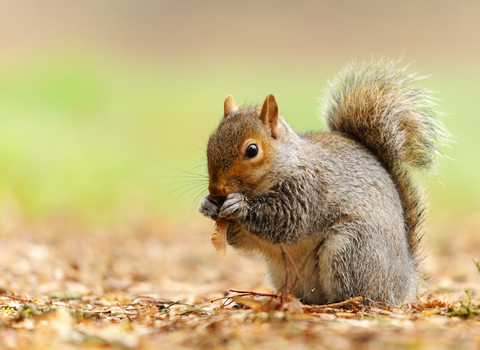
©Amy Lewis
Grey squirrel
The grey squirrel was introduced into the UK in the 1800s. It provides an easy encounter with wildlife for many people, but can be damaging to woodlands and has contributed to the decline of the red squirrel.
Enw gwyddonol
Sciurus carolinensisPryd i'w gweld
January to DecemberGwybodaeth am rywogaethau
Ystadegau
Length: 24-28.5cmTail: 19.5-24cm
Weight: 400-650g
Average lifespan: 2-5 years
The grey squirrel is classified as an invasive non-native species.
